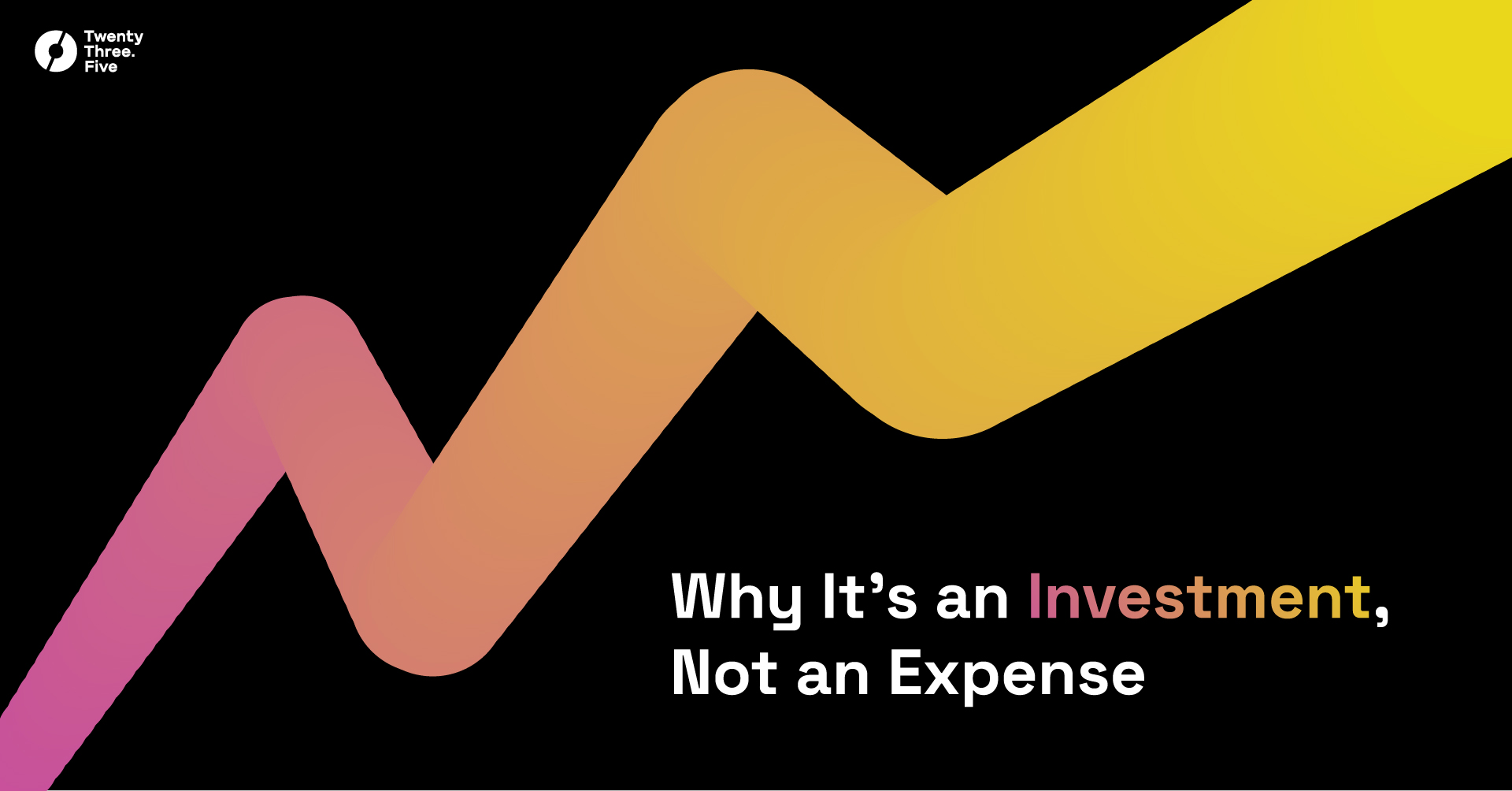
In the world of business, a brand is much more than a name, logo, or color scheme; it’s the essence of your company. It’s the sum of the emotions, perceptions, and experiences associated with your business. However, some mistakenly view branding as a mere expense, a budget line that can be minimized. In this exploration, we’ll delve into the components of a strong brand identity, dispel the myth of branding as an expense, and underline the fact that branding is a strategic investment for long-term success.
The Value of Branding
1. Brand Perception
The way customers perceive your brand is a cornerstone of your success. Branding isn’t just about creating an appealing logo; it’s about crafting an image and perception that resonates with your audience.
Effective branding builds trust and customer loyalty. When your brand consistently conveys reliability and a clear message, customers are more likely to choose your products or services. Take the example of Apple, a company renowned for its sleek design and innovation. Its brand perception influences customer choices and engenders trust.
Consistency in branding is key. It’s not only about having a recognizable logo; it’s about ensuring that every customer interaction, from your website to your products, consistently reflects your brand’s core values and promise.
2. Competitive Advantage
In today’s competitive market, branding sets your business apart. It’s not just about being recognizable; it’s about crafting a unique identity that makes your business unforgettable.
When done right, branding provides a competitive edge. It’s not merely about a logo; it’s about creating a holistic experience that sets you apart. Consider the case of Tesla, which has used branding to stand out in the crowded electric vehicle market. Their commitment to innovation and sustainability is an integral part of their brand identity, even with the craziness of their renowned CEO.
3. Market Positioning
Branding isn’t just about having a pretty logo; it’s about strategically positioning your business in the market. It allows you to communicate your unique value proposition and connect with your target audience.
When your brand aligns with the needs and desires of your audience, you establish a strong market presence. A prime example of this is TOMS, the shoe company. By incorporating a one-for-one giving model into its brand identity, TOMS positioned itself as a socially conscious and compassionate brand. Their customers don’t just buy shoes; they buy into a mission.
Branding as an Investment
1. Long-Term Vision
Branding is a long-term vision, not a quick fix. It’s about creating a brand identity that stands the test of time and evolves with your business.
Many successful brands invested in their image from the very beginning and continued to build on it year after year. They didn’t view branding as an expense but as a strategic investment in their future. For instance, consider the journey of Amazon. What started as an online bookstore is now a global e-commerce giant. Its brand has evolved and expanded, playing a pivotal role in its long-term success.
2. Return on Investment (ROI)
In business, every decision ultimately ties back to ROI. Branding is no exception. However, the ROI of branding extends far beyond immediate sales; it encompasses the long-term value of your brand.
Companies that consistently invest in their brand identity have seen substantial returns. Nike, for example, invested heavily in its brand, and the iconic “swoosh” logo is now one of the most recognizable symbols worldwide.
3. Building Brand Equity
Brand equity is the added value a strong brand brings to your products or services. It’s the trust, recognition, and loyalty your brand commands in the market.
Building brand equity is a long-term endeavor. Iconic brands like Coca-Cola and Disney have nurtured their brand equity over the years, making them highly valuable brands today.
Misconceptions About Branding
1. Cost vs. Investment
One common misconception is viewing branding as a cost, an expense that needs to be minimized. However, branding expenses are better seen as investments in the long-term health and success of your business.
Consider the story of Google. What began as a search engine has grown into a tech giant. Its consistent branding efforts have expanded its presence into various aspects of our digital lives. The investment in their brand has paid off tremendously.
2. Branding vs. Marketing
Another misconception arises from differentiating branding and marketing. While marketing focuses on short-term tactics to drive sales, branding is about building a foundation for lasting success. This is a complex and interesting topic that we will expand on further in another blog. For now, think of Red Bull, a brand that’s synonymous with extreme sports, adventure, and a lifestyle of pushing boundaries. This isn’t solely due to marketing campaigns or advertisements; it’s a result of a carefully curated brand identity.
Branding: Red Bull’s branding efforts focus on creating a brand image associated with excitement and fearlessness. Their logo, the two red bulls charging against a yellow sun, exudes energy and enthusiasm. The tagline, “Gives You Wings,” encapsulates the brand’s core promise: to provide consumers with the energy to do more and go beyond their limits.
Red Bull consistently sponsors and participates in extreme sports events and stunts. This involvement isn’t just a marketing ploy; it’s an embodiment of their brand identity. They’ve invested in the association of their brand with the spirit of adventure and pushing one’s limits.
Marketing: Red Bull’s marketing efforts, in contrast, are more tactical and short-term. They run promotions, distribute free samples, and invest in ad campaigns to boost sales. For example, they often host or sponsor events like “Red Bull Flugtag” (where teams build and pilot human-powered flying machines), aligning with their brand’s adventurous spirit. These marketing tactics aim to generate buzz and increase product consumption.
The key distinction lies in the fact that Red Bull’s marketing activities feed into and reinforce its brand identity. The marketing campaigns aren’t merely about selling cans of energy drinks; they’re about associating Red Bull with a high-energy, daring lifestyle. This approach has resulted in a loyal following, as consumers don’t just buy a beverage; they buy into an entire brand ethos.
By examining Red Bull’s approach, it’s clear that branding and marketing, while interconnected, serve different roles in achieving business objectives. Marketing drives short-term results, while branding shapes a long-term identity that fosters customer loyalty and trust.
The Role of TwentyThree.Five
At TwentyThree.Five, we understand the power of branding as an investment. We partner with businesses to craft and evolve their brand identity, enabling them to thrive in the long run.
Consider our work with Frontline Group, a contact center and customer experience business in the tech sector. By investing in their brand identity in the summer of 2022, they have garnered the trust and recognition of their audience, making their mark in a competitive industry.
Branding is not an expense that eats into your budget; it’s a strategic investment that can lead to long-term success. It encompasses building a strong brand perception, gaining a competitive advantage, and effectively positioning your business in the market.
When viewed as an investment, branding offers substantial returns in the form of trust, loyalty, and added brand equity. It’s the foundation for lasting success in a dynamic and competitive business world.
Are you ready to invest in your brand’s long-term success? Start a mission today and embark on a journey of building a strong brand identity that stands the test of time.


